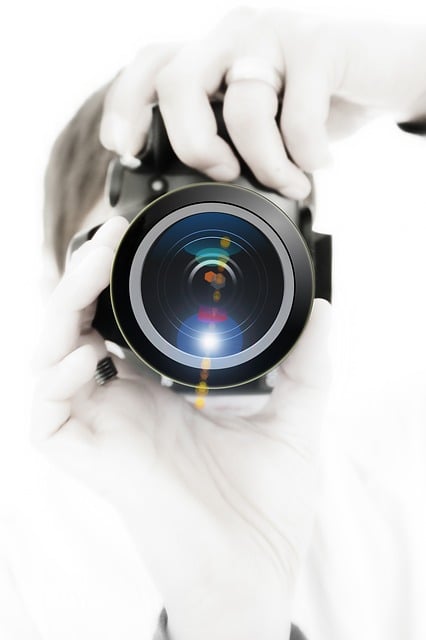Personal safety is undergoing a revolution driven by emerging safety products and safety product technology. Key trends include:
Wearable tech & smart fabrics: Integrating sensors into protective gear for real-time hazard monitoring and quick responses.
Adaptive protection: Smart fabrics that detect risks like fire or extreme temperatures and trigger protective measures.
Smarter, lighter gear: Using materials like carbon fiber composites for superior strength and comfort.
Predictive analytics: AI and ML algorithms anticipate hazards based on data and real-time sensor inputs, offering personalized protection.
* Eco-friendly focus: A growing demand for sustainable safety products made from biodegradable materials like organic cotton and recycled polyester.
These future safety trends are shaping lighter, more adaptable, and environmentally conscious personal safety innovations, enhancing safety across industries and daily life.
The realm of safety product technology is undergoing a metamorphosis. Driven by advancements in wearable tech and smart fabrics, personal safety innovations are leading the way, offering unprecedented levels of protection in everyday life. Emerging safety products are revolutionizing industrial and home environments with intelligent design and sustainable materials. Future safety trends in healthcare promise enhanced patient protection through AI-driven hazard prediction and prevention. The evolution of protection gear is characterized by lightweight, durable, smart materials, reshaping our approach to safety across sectors.
- Personal Safety Innovations Leading the Way: Wearable Tech and Smart Fabrics
- Emerging Safety Products: Revolutionizing Industrial and Home Environments
- Future Safety Trends in Healthcare: Enhancing Patient Protection
- The Evolution of Protection Gear: Lightweight, Durable, and Smart Materials
- Artificial Intelligence and Machine Learning: Predicting and Preventing Hazards
- Sustainable and Eco-Friendly Safety Product Technology: A Growing Trend
Personal Safety Innovations Leading the Way: Wearable Tech and Smart Fabrics

Personal Safety Innovations Leading the Way: Wearable Tech and Smart Fabrics
The future of safety product technology is here, and it’s driven by remarkable personal safety innovations. One of the most prominent trends is the integration of wearable technology into protective gear, allowing for real-time monitoring and enhanced responsiveness in hazardous environments. From smart vests with built-in sensors to advanced helmets equipped with AI, these devices provide vital data on an individual’s well-being, ensuring prompt intervention when needed.
Smart fabrics are another game-changer, integrating safety features directly into clothing materials. These textiles can detect potential risks like fire or extreme temperatures, alerting wearers and even initiating protective measures. This innovative approach not only enhances personal safety but also reduces the burden on traditional protection gear, making it lighter, more comfortable, and adaptable to various work scenarios.
Emerging Safety Products: Revolutionizing Industrial and Home Environments

Emerging Safety Products are revolutionizing both industrial and home environments by introducing cutting-edge technologies designed to enhance personal safety. In industries, smart protective gear is being developed with integrated sensors that monitor vital signs and environmental hazards in real time, alerting wearers to potential risks before they become critical. This data enables workers to take proactive measures, significantly reducing the risk of accidents and injuries on the job.
At home, future safety trends include innovative products like smart smoke and carbon monoxide detectors that can identify and differentiate between various types of gases, as well as automated emergency response systems integrated into everyday appliances. These personal safety innovations not only provide early warning but also facilitate rapid evacuation and assistance during emergencies. As safety product technology continues to evolve, these emerging developments promise a safer future for individuals in diverse settings.
Future Safety Trends in Healthcare: Enhancing Patient Protection

The future of healthcare is closely tied to advancements in safety product technology, which aim to enhance patient protection and improve overall care quality. Emerging innovations are focusing on creating smarter, more adaptive, and personalized safety gear that can anticipate and mitigate risks. For instance, wearable devices equipped with advanced sensors and AI algorithms can monitor vital signs, detect abnormalities, and alert healthcare professionals promptly, enabling early interventions.
These future safety trends in healthcare also involve the integration of augmented reality (AR) and virtual reality (VR) technologies to simulate training scenarios, improving emergency response preparedness. Additionally, materials science is playing a significant role in developing lighter, stronger, and more flexible protective gear, enhancing user comfort and mobility without compromising safety. Personal safety innovations are also extending beyond hospitals into the broader community, with smart textiles and integrated security systems offering new levels of protection for daily activities.
The Evolution of Protection Gear: Lightweight, Durable, and Smart Materials

The evolution of protection gear is undergoing a remarkable transformation, driven by advancements in safety product technology and future safety trends. Modern innovations focus on creating lightweight, durable, and smart materials that enhance personal safety without compromising comfort or mobility. This shift towards more advanced protection gear is evident in various sectors, from construction to sports.
Emerging safety products leverage cutting-edge materials such as carbon fiber composites, which offer exceptional strength-to-weight ratios, ensuring robust protection while keeping gear lightweight. Additionally, smart fabrics integrated with sensors and connectivity technologies enable real-time monitoring of vital signs and environmental hazards, enhancing the overall safety experience. These personal safety innovations not only protect against physical dangers but also provide valuable data for preventive measures, marking significant developments in the future of protection gear.
Artificial Intelligence and Machine Learning: Predicting and Preventing Hazards

Artificial Intelligence (AI) and Machine Learning (ML) are transforming the landscape of safety product technology, paving the way for future safety trends that promise to revolutionize personal safety innovations. By leveraging vast datasets and advanced algorithms, AI and ML can predict and prevent hazards before they occur, marking a significant shift in how we approach personal safety developments. These technologies enable emerging safety products to learn from past incidents and adapt their responses in real-time, ensuring that workers and individuals are protected against evolving risks.
For instance, predictive analytics powered by AI can anticipate potential dangers based on historical data, sensor inputs, and environmental factors, allowing for proactive measures. In industrial settings, this could mean identifying hazardous conditions or predicting equipment failures before they lead to accidents. Similarly, smart protective gear equipped with ML algorithms can adapt to the wearer’s movements, providing tailored protection against specific risks. This personalized approach to safety not only enhances protection but also ensures that safety product technology keeps pace with the ever-changing nature of work and environmental hazards.
Sustainable and Eco-Friendly Safety Product Technology: A Growing Trend

In recent years, there has been a noticeable shift towards sustainable and eco-friendly practices across various industries, and personal safety innovations are no exception. The demand for emerging safety products that align with future safety trends is on the rise as consumers become more conscious of their environmental impact. Traditional protection gear, often made from non-biodegradable materials, is being replaced by innovative designs utilizing sustainable resources. This growing trend not only addresses environmental concerns but also offers improved comfort and performance in various work and everyday scenarios.
The future of protection gear lies in its ability to strike a balance between effectiveness and ecological responsibility. Manufacturers are exploring new materials such as organic cotton, recycled polyester, and plant-based bioplastics to create personal safety developments that are kind to the planet without compromising quality. These materials not only reduce waste but also provide excellent breathability, allowing users to stay comfortable during prolonged use. As the world moves towards a greener future, sustainable safety product technology is set to play a pivotal role in shaping the way we protect ourselves while minimizing our environmental footprint.






